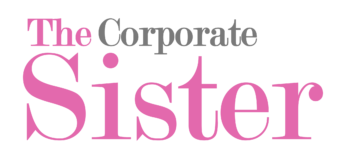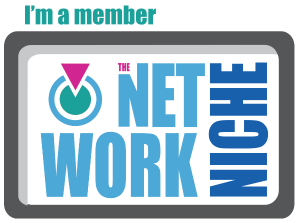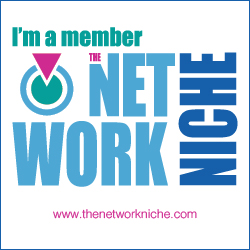 After weeks of anticipation and Internet-scouring, I finally left the kids with their dad, fixed my ‘fro, and went on a girl-movie-date with my sis-in-law to see “Hidden Figures“. I have to say, I was both excited and a bit apprehensive. There comes a point when, as a Black or minority person, you get slightly weary of watching anything reminiscent of your community’s suffering and challenges. Yet, at the same time, you have this yearning at the pit of your stomach to honor the stories of those who went before you and make them part of your own…
After weeks of anticipation and Internet-scouring, I finally left the kids with their dad, fixed my ‘fro, and went on a girl-movie-date with my sis-in-law to see “Hidden Figures“. I have to say, I was both excited and a bit apprehensive. There comes a point when, as a Black or minority person, you get slightly weary of watching anything reminiscent of your community’s suffering and challenges. Yet, at the same time, you have this yearning at the pit of your stomach to honor the stories of those who went before you and make them part of your own…
And Hidden Figures doesn’t just succeed at making the stories of three pioneering African-American whose work for NASA contributed in several historic space missions part of my own. It also accomplished the amazing feat of successfully telling many of our own untold stories…
The movie recounts the stories of Katherine G. Johnson, Dorothy Vaughan, and Mary Jackson, who in the 1950s, literally calculated by hand the launch of astronaut John Glenn’s trajectory into space. Based on the book of the same name by author Margot Lee Shetterly, it tells of extraordinary willpower by amazing women in the midst of a gut-wrenching struggle.
As a result of Virginia’s strict segregation laws at the time, African-American women computers worked in their own “colored” building in the reputable Langley Center. At the time, the U.S. was desperate to beat the Soviet Union in the “race to space”. It’s in this highly heated context that Katherine Johnson (Taraji P. Henson), a mathematics genius in her own right, gets assigned to the illustrious task group in charge of sending the first American man to space. As the sole Black woman in the room, she faces blatant discrimination, even as she produces work of outstanding quality.
On the other hand, Mary Jackson, played by Janelle Monae, is one feisty sister battling racist bureaucratic hurdles to become the first NASA woman engineer. Dorothy, played by the fabulous Octavia Butler, is a dedicated, generous to a fault, group leader fighting for an overdue promotion, while facing the risk of her entire team being replaced by a new IBM machine. Against all odds, Dorothy teaches herself the art of programming, and becomes NASA’s first African-American manager.
There were many moments in the movie that grabbed me by the throat, threatening to make me break into the “ugly cry” all over my over-buttered popcorn. But it’s three of these moments that hugged my Black working woman’s conscience tighter than spandex leggings on a diet cheat day:
- That moment when Katherine finally discloses to her boss (played by an ever-charming Kevin Costner) that her long, daily absences are due to her having to run over 4o minutes across the Langley Center to the only “colored” bathroom, and stands up for herself by denouncing the blatant racism around her, including the dingy coffee pitcher with a “colored” label on it reserved for her;
- That time when Mary goes to court to request the right to attend night classes at the local segregated school to become an engineer, arguing to the judge that just like he had been the “first” in his family to become a judge, she was looking to become the “first” NASA woman engineer too ;
- Finally, that moment when Dorothy expresses her ambivalent feelings about Katherine’s successful assignment to the task group, outlining that despite the fact that “upward movement for one of us is movement for all of us”, discrimination still remains the norm for many others.
Hidden Figures tells the story of real women who are not just brilliant, but also extremely generous with their intelligence, their time, and their patience, to serve a common, patriotic goal. It tells the story of women like you and I, fighting to get ahead against the established status quo. Women who give much, sometimes too much, even when there’s not much left of themselves to give away. Women who stand up for themselves and their sisters, even when it means putting themselves and their careers on the line. Women who watch these sisters rise up, and celebrate while wondering when their turn will be.
I was weary of watching yet another movie rooted in racism and discrimination, but was glad that Hidden Figures turned out to be a heart-soothing, light, and even hopeful affair. While I have as much of a clue about aeronautical formulas as I do about neurosurgery, the film was rooted in such a human spirit of connection that it didn’t matter. What it wasn’t trying to do was romanticize the concept of racism and pretend that it’s been solved. Instead, it was a realistic take on a tough subject matter that needs to be talked about more…
All in all, Hidden Figures lends a powerful lens into what it means to be a talented woman shut out of opportunities on the basis of the color of your skin. But it also sheds an all-too-important light on the impact of sisterhood, community, and the sheer power of having the audacity to believe more for yourself…
Enjoy the trailer below:
What did you think of the movie? Please share your insights in the comments below…
The Corporate Sis.







